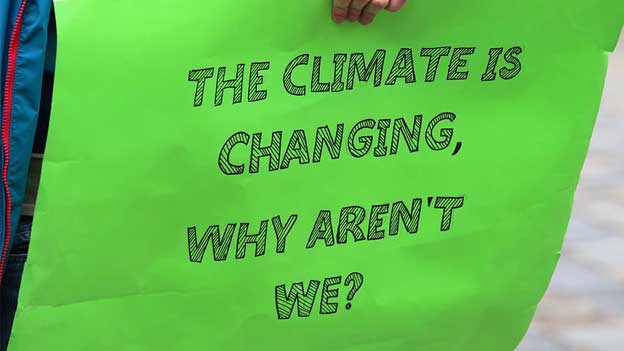Climate change is a global problem, since it affects – with greater or lesser aggressiveness – all regions of the planet, with increased temperatures and increased risk of desertification to higher annual rainfall and flood risks; as we have posted previously.
The European Environment Agency has observed a number of impacts ranging from economic sectors such as tourism and energy; to the environment. For example, loss of biodiversity, forest fires, decreased crop yields, increased demand for water, mortality from heat waves, etc. These impacts in the countries of Western Europe are collected in the following map (Source: European Parliament).

The EU in the face of climate change
Faced with the impacts of climate change, and currently endorsed by the latest IPCC report, the EU has joined the Paris Agreement, the first global agreement to tackle climate change. The EU promised to mitigate climate change and maintain global temperature growth at 1.5°C from pre-industrialized times. It also pledged to reduce greenhouse gas emissions by at least 40 percent below 1990 levels by 2030.
The EU one of the major GHG emitters
We must recognize that due to the model of production and life, the EU is the third largest emitter of greenhouse gases in the world after China and the United States, followed by India, Brazil and Japan (2015).Within the EU, the main emitters (2017) were Germany, the United Kingdom, France, Italy, Poland and Spain. The energy sector accounts for 80.7% of GHG emissions in the European Union, followed by agriculture (8.72%), industry (7.82%) and waste (2.75%; Source: European Parliament).

So it is the EU’s responsibility and obligation to put an immediate remedy in place. To this end, in 2008, the EU set itself the target of reducing emissions by 20% compared to 1990 levels. And in 2015, the EU registered a 22% reduction from 1990 levels.
Furthermore, in 2014, the EU set a new target of reducing emissions by at least 40 % by 2030 from 1990 levels.
And to reduce emissions from power plants and industry, the EU has established the first major carbon market with the Emissions Trading System (ETS), companies have to buy permits to emit carbon dioxide carbon (CO2), so the less they pollute, the less they pay. The scheme covers 45% of the European Union’s total greenhouse gas emissions.
For other sectors, such as buildings or agriculture, reductions will be achieved through agreed national emissions targets, which are calculated on the basis of the countries’ gross domestic product per capita.
On road transport, the European Parliament supported legislation to reduce CO2 emissions by 37.5% for new cars, 31% for vans and 30% for new trucks by 2030.
The EU also wants to use the carbon-absorbing power of forests to fight climate change. The European Parliament approved a regulation in 2017 to prevent emissions from deforestation and land-use change (LULUCF).
In addition, the European Commission is expected to present a proposal later this year on a border adjustment mechanism for carbon emissions, which would encourage companies inside and outside the EU to decarbonize. The aim of this tool is to set an import price for certain products from countries outside the EU that are less ambitious in terms of climate. Its objective is to prevent carbon leakage, which occurs when industries shift production to countries that have less stringent greenhouse gas emission rules.

Pingback: Climate summit 2021 - CONSOLE